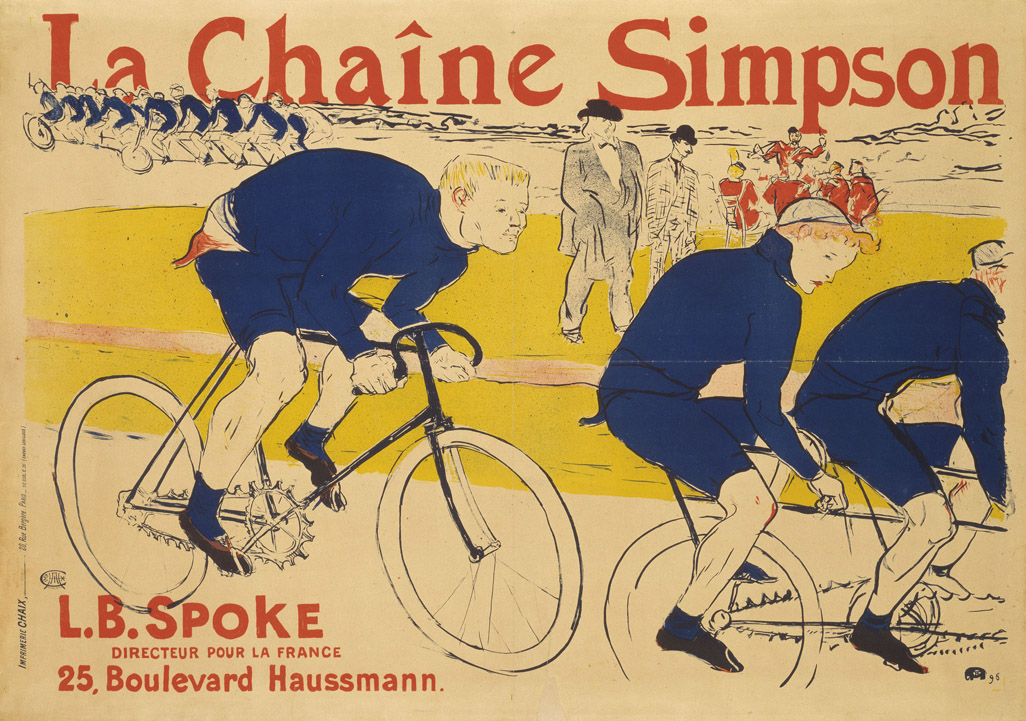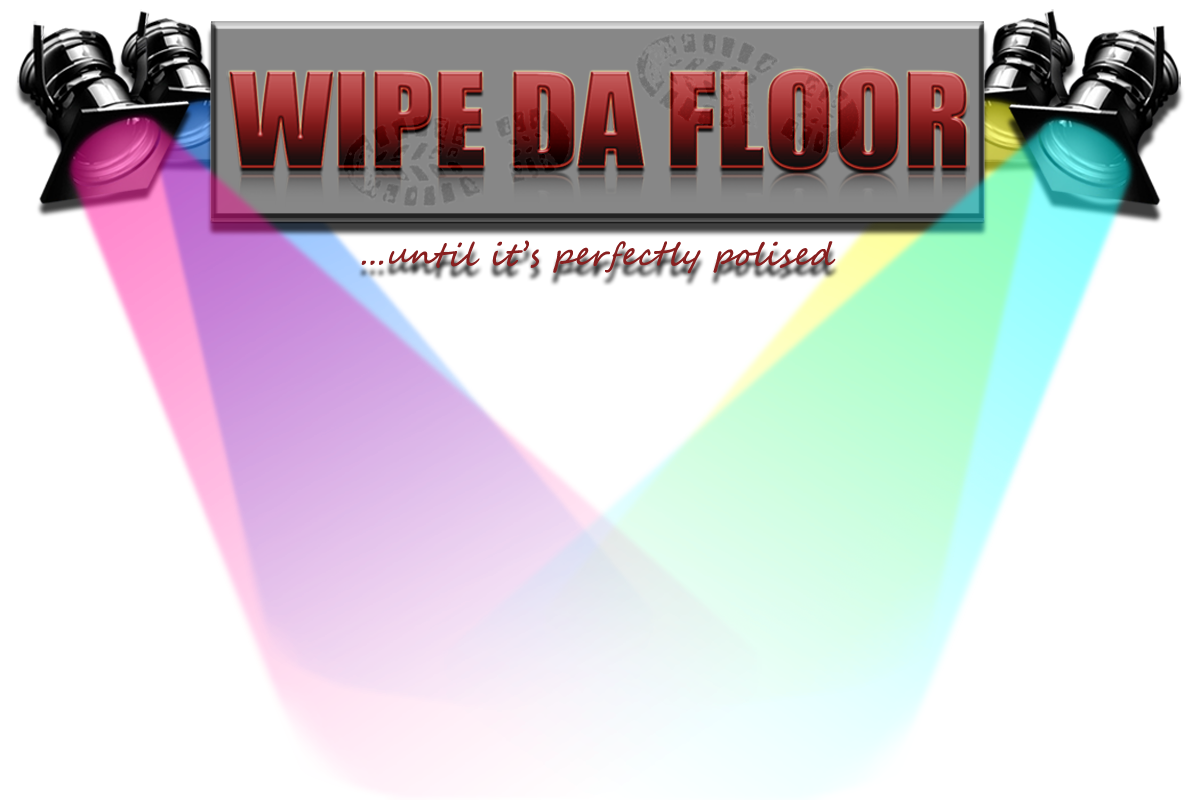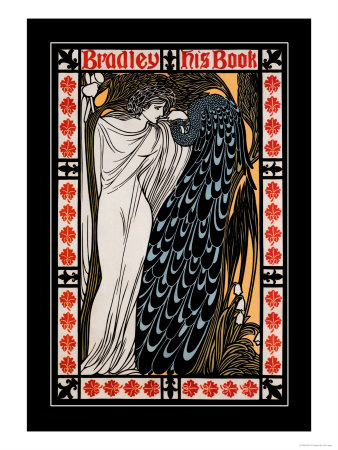Henri de Toulouse-Lautrec
In this essay I will be focusing on Henri de Toulouse-Lautrec, his influence to an advertisement and compare him to other artist in same period.
Henri de Toulouse-Lautrec, French postimpressionist painter, lithographer, and illustrator, who documented the bohemian nightlife of late-19th-century Paris.
Toulouse-Lautrec was born in Albi into one of the oldest aristocratic families. Henri was weak and often sick. By the time he was 10 he had begun to draw and paint. At 12 young Toulouse-Lautrec broke his left leg and at 14 his right leg. The bones failed to heal properly, and his legs stopped growing. He reached young adulthood with a body trunk of normal size but with abnormally short legs. During his convalescence, his mother encouraged him to paint. He subsequently studied with French academic painters L. J. F. Bonnat and Fernand Cormon.
He stayed in the Montmartre section of Paris, the center of the cabaret entertainment and bohemian life that he loved to paint. Circuses, dance halls, nightclubs, racetracks and parisian brothels—all these spectacles were set down on canvas or made into lithographs. Toulouse-Lautrec was very much a part of all this activity. He would sit at a crowded nightclub table, laughing and drinking, and at the same time he would make swift sketches.
Toulouse-Lautrec preserved his impressions of these places and their celebrities in portraits and sketches of striking originality and power. Outstanding examples are La Goulou Entering the Moulin Rouge (1892, Musée Toulouse-Lautrec, Albi), Jane Avril Entering the Moulin Rouge (1892, Courtauld Gallery, London), and Au salon de la rue des Moulins (1894, Musée Toulouse-Lautrec).
http://www.renoirinc.com/biography/artists/lautrec.htm
Henri de Toulouse-Lautrec was born on Nov. 24, 1864, in Albi, France. He was an aristocrat, the son and heir of Comte Alphonse-Charles de Toulouse and last in line of a family that dated back a thousand years. Henri's father was rich, handsome, and eccentric. His mother was overly devoted to her only living child. Henri was weak and often sick. By the time he was 10 he had begun to draw and paint.
At 12 young Toulouse-Lautrec broke his left leg and at 14 his right leg. The bones failed to heal properly, and his legs stopped growing. He reached young adulthood with a body trunk of normal size but with abnormally short legs. He was only 1.5 meters tall.
Deprived of the kind of life that a normal body would have permitted, Toulouse-Lautrec lived wholly for his art. He stayed in the Montmartre section of Paris, the center of the cabaret entertainment and bohemian life that he loved to paint. Circuses, dance halls and nightclubs, racetracks--all these spectacles were set down on canvas or made into lithographs.
Toulouse-Lautrec was very much a part of all this activity. He would sit at a crowded nightclub table, laughing and drinking, and at the same time he would make swift sketches. The next morning in his studio he would expand the sketches into bright-colored paintings.
In order to become a part of the Montmartre life--as well as to protect himself against the crowd's ridicule of his appearance--Toulouse-Lautrec began to drink heavily. In the 1890s the drinking started to affect his health. He was confined to a sanatorium and to his mother's care at home, but he could not stay away from alcohol. Toulouse-Lautrec died on Sept. 9, 1901, at the family chateau of Malrome. Since then his paintings and posters--particularly the
Moulin Rouge group--have been in great demand and bring high prices at auctions and art sales.
http://www.ibiblio.org/wm/paint/auth/toulouse-lautrec/
Biography of Henri de Toulouse-Lautrec, 1864-1901
Henri de Toulouse-Lautrec was born into an aristocratic family in the south of France in 1864. His father, Count Alphonse, was a notorious eccentric known for all kinds of unpredictable behavior: from washing his socks in the river (unheard of for an aristocrat!) to galloping off to a hunt wearing outlandish costumes, to simply disappearing for long stretches of time. The young Henri never became very close to him.
Unknown at the time, Henri suffered from a genetic condition that prevented his bones from healing properly. Fatefully, at age twelve, he broke his left leg. And at age fourteen, he broke his right leg. Both legs ceased to grow, while the rest of his body continued to grow normally.
At maturity, Lautrec was 4 1/2 feet tall. But his great misfortune was a sort of blessing in disguise, at least from our perspective. After his accidents he was no longer able to follow his father in the typically aristocratic pastimes of riding and hunting. Instead, he focused on sketching and painting.
Art and alcohol
In his late teens, Lautrec was honored to become a student of the artist Fernand Cormon, whose studio was located on the hill above Paris, Montmartre.
When he graduated from Cormon's studio, Lautrec gave himself up fully to the bohemian life, spending much of his time drinking and carousing — and constantly sketching — in cabarets, racetracks, and brothels.
His stunted physique earned him laughs and scorn, and kept him from experiencing many of the physical pleasures offered in Montmartre, a sorrow that he drowned in alcohol. At first it was beer and wine. Then brandy, whiskey, and the infamous absinthe found their ways into his life.
Art and alcohol were his only mistresses, and they were mistresses to which he devoted all of his time and energy. He was doing one or both almost every day of his life until he died.
Adapting the fad for Japanese style (asymmetric composition, flat areas of color) that then pervaded French art to the also burgeoning art of the picture poster, he created thousands of artworks both to memorialize his friends and to advertise their venues. Among those whose images are now a part of art history are the Moulin Rouge dancers Louise Weber (La Goulue) and Jane Avril, and the combative singer/entrepreneur Aristide Bruant.
http://www.lautrec.info/biography.html
Childhood and education
Toulouse-Lautrec’s family was wealthy and had a lineage that extended without interruption back to the time of Charlemagne. He grew up amid his family’s typically aristocratic love of sport and art. Most of the boy’s time was spent at the Château du Bosc, one of the family estates located near Albi. Henri’s grandfather, father, and uncle were all talented draftsmen, and thus it was hardly surprising that Henri began sketching at the age of 10. His interest in art grew as a result of his being incapacitated in 1878 by an accident in which he broke his left thighbone. His right thighbone was fractured a little more than a year later in a second mishap. These accidents, requiring extensive periods of convalescence and often painful treatments, left his legs atrophied and made walking most difficult. As a result, Toulouse-Lautrec devoted ever greater periods to art in order to pass away the frequently lonely hours.
Toulouse-Lautrec’s first visit to Paris occurred in 1872, when he enrolled in the Lycée Fontanes (now Lycée Condorcet). He gradually moved on to private tutors, and it was only after he had passed the baccalaureate examinations, in 1881, that he resolved to become an artist. His first professional teacher in painting was René Princeteau, a friend of the Lautrec family. Princeteau’s fame, such as it was, arose from his depiction of military and equestrian subjects, done in a 19th-century academic style. Though Toulouse-Lautrec got on well with Princeteau, he moved on to the atelier of Léon Bonnat at the end of 1882. In Bonnat, Toulouse-Lautrec encountered an artist who fought vehemently against deviation from academic rules, condemned the slapdash approach of the Impressionists, and judged Toulouse-Lautrec’s drawing “atrocious.” His work received a more positive reaction in 1883, when he joined the studio of Fernand Cormon. In the early 1880s, Cormon enjoyed a moment of celebrity, and his studio attracted such artists as Vincent van Gogh and the Symbolist painter Émile Bernard. Cormon gave Toulouse-Lautrec much freedom in developing a personal style. That Cormon approved of his pupil’s work is proved by his choosing Toulouse-Lautrec to assist him in illustrating the definitive edition of the works of Victor Hugo. In the end, however, Toulouse-Lautrec’s drawings for this project were not used. Despite this approval, Toulouse-Lautrec found the atmosphere at Cormon’s studio increasingly restrictive. “Cormon’s corrections are much kinder than Bonnat’s were,” he wrote his uncle Charles on Feb. 18, 1883. “He looks at everything you show him and encourages one steadily. It might surprise you, but I don’t like that so much. You see, the lashing of my former master pepped me up, and I didn’t spare myself.” The academic regimen of copying became insufferable. He made “a great effort to copy the model exactly,” one of his friends later recalled, “but in spite of himself he exaggerated certain details, sometimes the general character, so that he distorted without trying or even wanting to.” Soon Toulouse-Lautrec’s attendance at the studio became infrequent at best. He then rented his own studio in the Montmartre district of Paris and concerned himself, for the most part, with doing portraits of his friends.
http://www.britannica.com/EBchecked/topic/600695/Henri-de-Toulouse-Lautrec
Art Nouveau was an international design movement that emerged and touched all of the design arts—architecture, fashion, furniture, graphic, and product design—during the 1890s and the early 20th century. Its defining characteristic was a sinuous curvilinear line. Art Nouveau graphic designs often utilized stylized abstract shapes, contoured lines, and flat space inspired by Japanese ukiyo-e woodblock prints. Artists in the West became aware of ukiyo-e prints as trade and communication between Eastern and Western nations increased during the last half of the 19th century. Building upon the example of the Japanese, Art Nouveau designers made colour, rather than tonal modeling, the primary visual attribute of their graphics.
One of the most innovative posters of the Art Nouveau movement was artist Henri de Toulouse-Lautrec’s 1891 poster of the dancer La Goulue, who was then performing at the Moulin Rouge. Toulouse-Lautrec captured the atmosphere and activity of the dance by reducing imagery to simple, flat shapes that convey an expression of the performance and environment. Although Toulouse-Lautrec only produced about three dozen posters, his early application of the ukiyo-e influence propelled graphic design toward more reductive imagery that signified, rather than depicted, the subject. He often integrated lettering with his imagery by drawing it in the same casual technique as the pictorial elements.
http://www.britannica.com/EBchecked/topic/1032864/graphic-design/242768
/Art-Nouveau?anchor=ref845045
Alphonse Mucha, original name Alfons Maria Mucha (born July 24, 1860, Ivančice, Moravia, Austrian Empire [now in Czech Republic]—died July 14, 1939, Prague, Czechoslovakia), Art Nouveau illustrator and painter noted for his posters of idealized female figures.
After early education in Brno, Moravia, and work for a theatre scene-painting firm in Vienna, Mucha studied art in Prague, Munich, and Paris in the 1880s. He first became prominent as the principal advertiser of the actress Sarah Bernhardt in Paris. He designed the posters for several theatrical productions featuring Bernhardt, beginning with Gismonda (1894), and he designed sets and costumes for her as well. Mucha designed many other posters and magazine illustrations, becoming one of the foremost designers in the Art Nouveau style. His supple, fluent draftsmanship is used to great effect in his posters featuring women. His fascination with the sensuous aspects of female beauty—luxuriantly flowing strands of hair, heavy-lidded eyes, and full-lipped mouths—as well as his presentation of the female image as ornamental, reveal the influence of the English Pre-Raphaelite aesthetic on Mucha, particularly the work of Dante Gabriel Rossetti. The sensuous bravura of the draftsmanship, particularly the use of twining, whiplash lines, imparts a strange refinement to his female figures.
Between 1903 and 1922 Mucha made four trips to the United States, where he attracted the patronage of Charles Richard Crane, a Chicago industrialist and Slavophile, who subsidized Mucha’s series of 20 large historical paintings illustrating the “Epic of the Slavic People” (1912–30). After 1922 Mucha lived in Czechoslovakia, and he donated his “Slavic Epic” paintings to the city of Prague.
http://www.britannica.com/EBchecked/topic/395800/Alphonse-Mucha
Alphonse Mucha, a young Czech artist who worked in Paris, is widely regarded as the graphic designer who took Art Nouveau to its ultimate visual expression. Beginning in<script src="http://adserver.adtechus.com/addyn/3.0/5308.1/1371256/0/170/ADTECH;target=_blank;grp=192;key=false;kvqsegs=D;kvtopicid=1032864;kvchannel=ARTS;misc=1298514507578"></script> the 1890s, he created designs—usually featuring beautiful young women whose hair and clothing swirl in rhythmic patterns—that achieved an idealized perfection. He organized into tight compositions lavish decorative elements inspired by Byzantine and Islamic design, stylized lettering, and sinuous female forms. Like many other designers at the time, Mucha first captured public notice for poster designs, but he also received commissions for magazine covers, packages, book designs, publicity materials, and even postage stamps. In this way, the role and scope of graphic-design activity steadily expanded throughout the period.
http://www.britannica.com/EBchecked/topic/1032864/graphic-design/242768/Art-Nouveau?anchor=ref845045
 http://www.britannica.com/EBchecked/media/6996/Art-Nouveau-poster-advertising-Monaco-Monte-Carlo-lithograph-in-colours
http://www.britannica.com/EBchecked/media/6996/Art-Nouveau-poster-advertising-Monaco-Monte-Carlo-lithograph-in-colours
 http://www.1st-art-gallery.com/thumbnail/151162/1/Dun,-A-Gordon-Setter-Belonging-To-Comte-Alphonse-De-Toulouse-Lautrec.jpg
http://www.1st-art-gallery.com/thumbnail/151162/1/Dun,-A-Gordon-Setter-Belonging-To-Comte-Alphonse-De-Toulouse-Lautrec.jpg
 http://en.wahooart.com/A55A04/w.nsf/OPRA/BRUE-7Z4QGC/$File/Henri+de+Toulouse-Lautrec+-+Tethered+Horse+.JPG
http://en.wahooart.com/A55A04/w.nsf/OPRA/BRUE-7Z4QGC/$File/Henri+de+Toulouse-Lautrec+-+Tethered+Horse+.JPG
 https://blogger.googleusercontent.com/img/b/R29vZ2xl/AVvXsEg3yPaMKEtUppVCjZCRUiU9LXvF2h2swvvfKpZpLzxzUKRFYnUTLAR22ID4O0KKtuftFCAaicNtjp01LmZ0DKULxaeHRhWvAU9PcIWegR0lVQxmQ5nb5kte7hXRbtHJh37HhcHVkYxan7c/s1600/Toulouse-Lautrac.jpg
https://blogger.googleusercontent.com/img/b/R29vZ2xl/AVvXsEg3yPaMKEtUppVCjZCRUiU9LXvF2h2swvvfKpZpLzxzUKRFYnUTLAR22ID4O0KKtuftFCAaicNtjp01LmZ0DKULxaeHRhWvAU9PcIWegR0lVQxmQ5nb5kte7hXRbtHJh37HhcHVkYxan7c/s1600/Toulouse-Lautrac.jpg
 http://sexualityinart.files.wordpress.com/2009/03/suzanne-valadon-henri-de-toulouse-lautrec.jpg
http://sexualityinart.files.wordpress.com/2009/03/suzanne-valadon-henri-de-toulouse-lautrec.jpg
 http://www.dailyartfixx.com/wp-content/uploads/2009/11/moulin-rouge-la-goulue-large.jpg
http://www.dailyartfixx.com/wp-content/uploads/2009/11/moulin-rouge-la-goulue-large.jpg
 http://hawkdog.net/wordpress/wp-content/uploads/2010/11/Henri-de-Toulouse-Lautrec2.jpg
http://hawkdog.net/wordpress/wp-content/uploads/2010/11/Henri-de-Toulouse-Lautrec2.jpg
Documentary:
Toulouse-Lautrec: The Full Story by Waldemar Januzczak (2006)
Toulouse-Lautrec, Henri de. Video. Encyclopædia Britannica Online. Web. 24 Feb. 2011. <http://www.britannica.com/EBchecked/media/94705/Henri-de-Toulouse-Lautrec-celebrated-the-demimonde-of-Montmartre-in>.
Bibliography:
Stockstad M., Art History Third Edition (2008) Pearson Prentice Hall, Upper Saddler River, New Jersey










